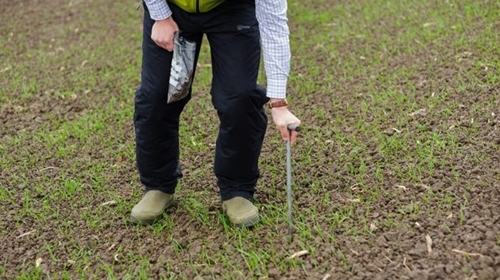
The GWCT has long advocated the need to focus on soil health (see blogs in March 2020 and January 2021). At our demonstration farm, the Allerton project, we have undertaken research to understand what constitutes a healthy soil and how to measure constituents such as soil moisture (see March 2021) as well as research considering the role of soil in crop production “in the round” i.e. from both a sustainable and profitable perspective (e.g. the SoilCare EU project of which we are partners).
Consequently we were delighted to see that the EFRA committee inquiry into the recent debacle over the recent interpretation by the Environment Agency of the Farming Rules for Water (FRW) included much mention of the need to consider soil “in the round”. Silo-ing of individual policy objectives leads to tensions between policy initiatives. The FRW is an example of this – as was explained in the meeting – as the current interpretation resulting in the cessation of autumn applications of organic matter to improve water quality will result in other pollution pathways, disincentivise farmers on heavy soils from focussing on improving the carbon content of their soils, an objective of the new ELMS, and, ironically, increase run-off to watercourses as soils high in organic matter content can absorb and hold more water (see below).
Instead of banning autumn applications of organic matter, existing and new research needs to be used to design application strategies that deliver multiple benefits and build on the FRW (as originally intended in 2018), which if implemented properly, benefit the water environment. Trade-offs will inevitably be needed so that no one objective is delivered 100%; but the total outcomes should be worth more than the individual parts.
At this point I thought that rather than re-writing what has been eloquently said before in the March 2020 blog I would simply repeat key points from it (see below). It underlines the fact that soil is the glue that joins up so many of our environmental and agricultural policy objectives – we need that Soil Health Action Plan now!
“Soil health underpins all of our agricultural production. It is a vital asset that puts food on our tables. While the debate rages on and we continue to promote its importance, here are five things you might not know about soil:
- Healthy soil represents a very large store of carbon – the top 30cm alone is thought to contain more than twice as much carbon as there is in carbon dioxide in the atmosphere.
- Organic matter, the part of the soil that is made up of dead or decaying plants or animals and dead or live microorganisms such as bacteria and fungi, is incredibly important. For every 1% increase in organic matter, the soil can hold over 200,000 more litres of water per hectare.
- Where soils are healthy, there can be a greater weight of earthworms living below ground than the livestock grazing above ground. In farming systems with moderate nitrogen fertiliser use, where there is a healthy earthworm population (more than 400 per square metre) yields are higher than in areas with few earthworms.”